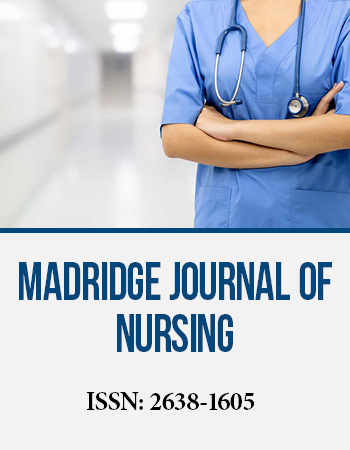Opinion Article
The Importance of the Manual Blood Pressure Skill amongst Nursing Students
1School of Nursing, College of Health Education and Human Sciences, University of Arkansas-Fort Smith, Carolyn McKelvey Moore, USA
2Anesthetist, School of Nursing, Mercy Hospital- Fort Smith, USA
*Corresponding author: Paula D Julian, Associate Professor, College of Nursing, University of Arkansas-Fort Smith, USA, Tel: 479-788-7844, E-mail: paula.julian@uafs.edu
Received: July 16, 2021 Accepted: July 22, 2021 Published: July 28, 2021
Citation: Julian PD, Julian CD. The Importance of the Manual Blood Pressure Skill amongst Nursing Students. Madridge J Nurs. 2021; 6(1): 185-186. doi: 10.18689/mjn-1000133
Copyright: © 2021 The Author(s). This work is licensed under a Creative Commons Attribution 4.0 International License, which permits unrestricted use, distribution, and reproduction in any medium, provided the original work is properly cited.
Introduction
Many skills and techniques taught to nursing students across the country provide a foundation for clientsʼ safe nursing assessment. One of those basic skills is the manual blood pressure assessment. When learning this skill, students listen closely and practice furiously with peers, family members, and anyone willing to let them. With skill achievement comes a sense of accomplishment like no other. When provided with the opportunity to assess blood pressure in the clinical practice setting, there is limited availability of aneroid blood pressure devices. The use of automatic blood pressure devices has replaced manual blood pressure assessment techniques in many health care settings. Unfortunately, due to the nature of this practice, rarely, if ever, is the manual blood pressure technique utilized in the real-life clinical setting. This practice creates a risk for a skill perish of the manual blood pressure assessment technique. Skill perish involves untimely loss or weakening of a skill due to a period of non-use. This trend also creates a potential level of dependence on the automatic blood pressure device.
Keywords: Blood pressure; Nursing
Best clinical decisions for clients occur when data is accurate and reliable. There are many clinical situations, which require the use of the manual assessment of blood pressure. One such disease process is hypertension. Accurate blood pressure measurement is vital in identifying hypertension; however, when using an automatic machine, varying readings can and will occur depending on a device implementation, along with many other factors. Additionally, clinical situations exist in which the manual blood pressure method validates the blood pressure obtained using an automatic blood pressure device. For example [1], in patients with persistent hypotension, automated blood pressure devices will often produce an error message, suggesting that the blood pressure is unobtainable when blood pressure is obtainable via the manual method.
In all fairness, both methods of blood pressure assessment are subject to human error. Furthermore, there are benefits to the use of the automatic device. Automatic machines can take multiple blood pressure readings without an observer being present [2], which is especially beneficial when the clinical situation requires serial or continuous blood pressure readings. Even then, there should not be sole reliance on automatic devices for the measurement of blood pressure. Continued competency in manual blood pressure measurement is vital for both the student and the registered nurse role.
The trend in health care is geared more toward the use of automatic blood pressure devices. Because of this, there are limited opportunities to assess blood pressure manually. There are also limited opportunities to cultivate continued competency in measuring manual blood pressure. This practice can result in skill perish, an untimely loss or weakening of a skill due to a period of non-use. The manual method of blood pressure measurement remains pertinent in the current clinical climate. According to [3], it is still the tried and true method for measurement of blood pressure. Accurate blood pressure measurement is a vital component of overall health assessment. Regardless of the technique used, ongoing training and use of devices are critical for precise blood pressure measurement [2]. There is a need to consider maintaining ongoing competency in measuring manual blood pressure at regular intervals. Furthermore, there is also a need for the readily assessable availability of aneroid devices in the clinical setting.
References
- Unsworth J, Tucker G, Hindmarsh Y. Man versus Machine: the importance of manual blood pressure measurement skills amongst registered nurses. Journal of Hospital Administration. 2015; 4(6): 61-67. doi: 10.5430/jha.v4n6p6
- Munter P, et al. Measurement of Blood Pressure in Humans: A Scientific Statement from the American Heart Association. Hypertension. 2019; 73(5): e35-e36. doi: 10.1161/HYP.0000000000000087
- Grim CE, Grim CM. Auscultatory BP: still the gold standard. J Am Soc of Hypertens. 2016; 10(3): 191-193. doi: 10.1016/j.jash.2016.01.004


